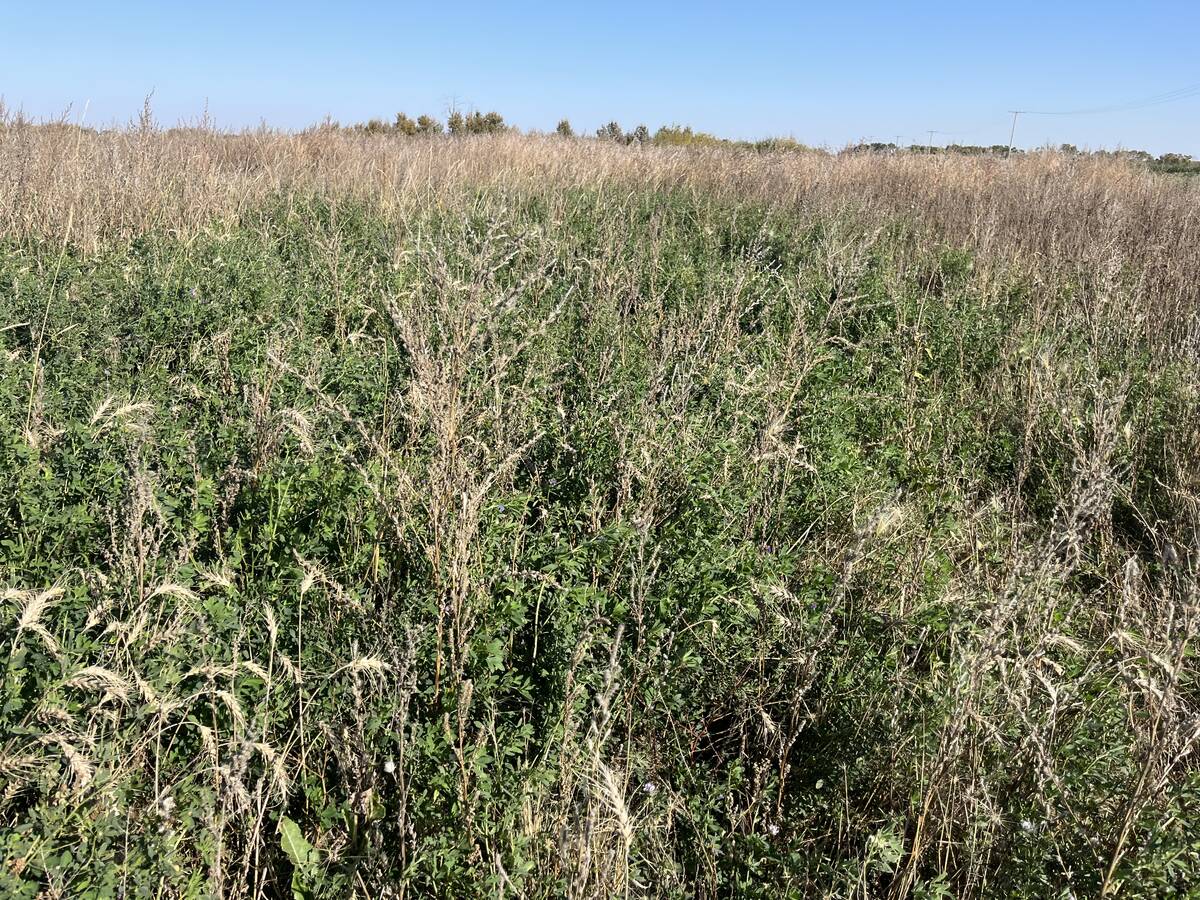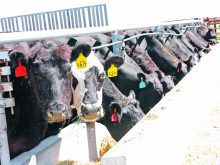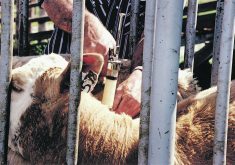Companies developing vaccines that inhibit methane production in cattle are facing challenges, say experts, and in the process, finding their development is more complex than first thought.
Tim McAllister, a research scientist with the Agriculture Canada Research Centre in Lethbridge, has been involved in livestock methane-inhibition research since 1991.
At that time, the focus was on creating energy and efficiency in cattle; climate change had not yet entered the conversation. Today, developing methane-reduction tools that also increase energy and efficiency is still a goal vaccine developers struggle to achieve, he says.
Read Also

Dormant seeding forages frees up farmer time and gets ahead of weeds
Dormant seeding isn’t common practice and can appear daunting, but there are some techniques to give Manitoba farmers an edge
Barriers to adoption
“That’s one of the barriers to adoption right now They don’t seem to be having that energetic benefit that we originally hypothesized, at least not as consistently as we would have hoped,” he says.
Karen Beauchemin, a retired Agriculture Canada researcher in Lethbridge, works part-time for the Global Methane Hub, an organization dedicated to the reduction of methane (CH4) in a host of industries, including agriculture. This experience gives her a window into CH4-reduction efforts throughout the world.
“The issue right now for producers is we’re not really to the point where we have proven technology that is farm-ready. A lot of those technologies are in early-stage development and we need to learn more about them.
“And I think the major drawback right now is we don’t really know how to reduce methane and improve performance using inhibitors and vaccines.”
Producing sufficient antibodies to target methanogens the bacteria in the rumen responsible for CH4 production has become an uphill battle, says McAllister.
Antibodies need to tackle more than one methanogen to be effective, he said. There are several types of methanogens in the rumen, and they tend to compensate for each other; inhibiting one causes others to fill the gap.
Current methane-reduction tools available
When it comes to methane-inhibiting tools, Canadian beef and dairy producers are probably most familiar with the feed additive Bovaer (active ingredient 3-Nitrooxypropanol or 3-NOP), if for no other reason than it’s the only such product on the market in Canada.
3-NOP was registered for use by the Canadian Food Inspection Agency in 2024. The product manufacturer, Dutch company dsm-firmenich, states it reduces methane emissions by an average of 30 per cent in dairy cows and 45 per cent in beef cattle.
Dsm-firmenich has released the product worldwide, and it is currently sold in Canada and the United States by Elanco.
Bovaer behaves differently from the vaccines in development, says Beauchemin. 3-NOP is an enzyme inhibitor. Rather than target the methanogens themselves, it goes after the specific enzymes in methanogens that create CH4.
“Essentially, it binds to the enzyme and it doesn’t let the enzyme do its thing, so it can’t make the methane,” she says.
Lack of interest
Canadian beef and dairy producers aren’t showing a lot of interest in Bovaer, at least on a mass scale, says Bovaer vice-president Mark van Nieuwland.
“Thus far, uptake in Canada has been fairly slow compared to other developed markets, particularly those with strong methane or (greenhouse gas) reduction objectives, or in which farmers are seen as part of the solution rather than the problem,” wrote Nieuwland in an email.
Canada’s current greenhouse gas reduction target is 45 to 50 per cent below 2005 levels by 2035.
Dairy Farmers of Canada has its own timeline: net zero emissions by 2050, while the Canadian Cattle Association says on its website that it is working on solutions to decrease emissions 33 per cent by 2030.
Long-term effectiveness
Another challenge is building long-term effectiveness into additives like Bovaer. So far, they must be administered “continuously” to maintain efficacy over more than a few hours, says McAllister.
This makes them prohibitive for growers putting their cattle out on pasture, in the process limiting these additives’ potential, he says. This is because most of the greenhouse gas emissions from ruminants come from those in extensive grazing systems.
Some companies are developing boluses that would release an inhibitor slowly, allowing cattle more time on pasture before they need to ingest another one.
Researchers still face the challenge of developing a matrix in which the right concentration is released at just the right rate into the rumen.
“It will (need to) last a period of time that makes it worthwhile,” says McAllister.
“Preferably it would last an entire grazing season.”
The challenge with Bovaer
Meanwhile, the current challenge with Bovaer, says Beauchemin, is that it would take an awfully large dose to work in cattle on pasture for any significant length of time. Otherwise, the dose breaks down within six hours.
Bovaer also needs to be included in a total mixed ration, which doesn’t work for cattle on pasture but works fine in feedlots and dairy operations.
“When you put that in the rumen, it starts working right away and it has to be in conjunction with the feed that the animals are digesting in order to make methane.”
Beauchemin says she isn’t picking on Bovaer its weaknesses simply come down to the difficulty involved in creating a slow-release product.
“Slow release for Bovaer is not that effective because you’d need a wonking big bolus. You need about a gram of material of 3-NOP per day. The active ingredient is about a gram.
“Boluses might hold 50 or 100 grams. So you’d be replacing that bolus every 100 days. You don’t want to do that because after two years, you have six boluses in the rumen.”
Nieuwland says Bovaer is making inroads into pasture-based systems, with current testing of a new form occurring in Australia and several European markets.
“We will continue our work on how to reach the next cow so that more and more farmers have tools/options that can be used in their farm systems.”
Return on investment
In Canada, no matter how invested they may be in mitigating the effects of climate change, cattle producers lack financial incentives to use methane inhibitors, says Beauchemin.
“The problem with 3-NOP and other inhibitors is even though they’re very, very effective at reducing methane if a (dairy) farmer feeds 3-NOP, it’s going to cost them maybe 40 cents per head per day.
“So you’re going to get a 30 per cent reduction in methane. You’re going to pay 40 cents and you’re not going to get any more milk out of the cows. If the farmer needs to get the revenue back, it has to be more than 40 cents or they’re not motivated to do it because he doesn’t make money by reducing methane.”
Since methane inhibition first became thought of as a greenhouse gas-reducing tool, the Canadian beef and dairy industries and various levels of government have struggled with how to offer producers financial incentives for reducing emissions.
However, one idea has managed to stick around: a carbon market where producers sell their carbon credits based on their carbon dioxide emissions.
Canada has yet to develop a national offset market, says Beauchemin.
Alberta and Quebec both have provincial offset markets, but they’re limited: the Alberta program is targeted toward beef producers and the Quebec cap-and-trade system is said to focus more on large industrial emitters. Plus, offset markets may not work in the case of 3-NOP.
“In Canada, there is opportunity in the carbon offset market perhaps for beef or feedlots, but the cost of 3-NOP versus the price of carbon right now in Canada is not high enough to offset the cost,” she says.
However, the federal government’s apparent inaction on developing a national offset program may soon come to an end, she says.
“Before the election, they were developing a Canadian offset program that would recognize enteric methane emissions from beef cattle, but other than that it’s still in the development stage.”
















